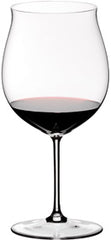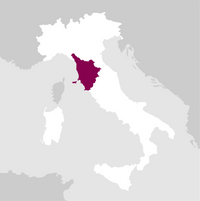Description
Castello di Ama San Lorenzo, takes its name from the lovely valley that is home to the 18th-century villas Pianigiani and Ricucci. This wine is made entirely by our estate grapes, coming specifically from old vine systems and from vineyards of more than 10 years old. Gran Selezione stands on the top of the quality pyramid of Chianti Classico and it is a guarantee for the consumer, both in terms of origin and in terms of quality.
Awards
Details

Perfume

Color

Taste
Serve at:
18 - 20 °C.
Longevity:
10 - 15 years
Decanting time:
1 hour

Pairings
- Start up year: 1976
- Oenologist: Marco Pallanti
- Bottles produced: 320.000
- Hectares: 75
To date, Castello di Ama owns and manages about 75 hectares of vineyards and 40 hectares of olive groves, relying on the work of more than 60 people. The role of general manager and oenologist is held continuously by Marco Pallanti, who served, between 2006 and 2012, as President of the Chianti Classico Consortium, bringing the contribution of the creation of the 'Gran Selezione' category with the aim of highlighting the extraordinary quality and diversity of the region's wines. Read more


| Name | Castello di Ama Chianti Classico Gran Selezione San Lorenzo 2015 |
|---|---|
| Type | Red still |
| Denomination | Chianti Classico DOCG |
| Vintage | 2015 |
| Size | 0,75 l |
| Alcohol content | 13.5% by volume |
| Grape varieties | 80% Sangiovese, 13% Merlot, 7% Malvasia Nera |
| Country | Italy |
| Region | Tuscany |
| Vendor | Castello di Ama |
| Origin | Gaiole in Chianti (SI) |
| Climate | Altitude: 460-525 m. a.s.l. Exposition: North-East/South-West – NorthEast/South-East. |
| Soil composition | Very plebby, clay and limestone. |
| Cultivation system | Vertical trellis, single Guyot. |
| Plants per hectare | 5500 |
| Wine making | Vinification has started through ambient yeasts, separately for each grape variety, in steel tanks at controlled temperature between 30° and 33° C, with manual pumping over and a total cuvaison of 22 days for Sangiovese, 25 days for Merlot and 26 days for Malvasia Nera. After the first draining off, the wine was transferred into barriques for malolactic fermentation. |
| Aging | The assemblage of the three grape varieties takes place at the end of the malolactic fermentation. Afterwards the wine is transferred into oak barrique – of which 18% are new - of fine grain for approximately 10 months. |
| Year production | 89780 bottles |
| Allergens | Contains sulphites |






